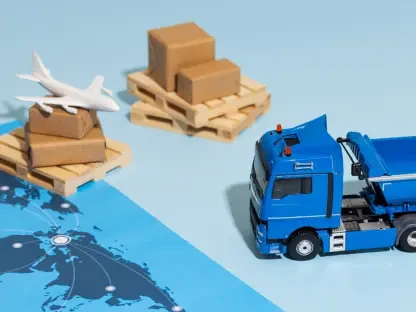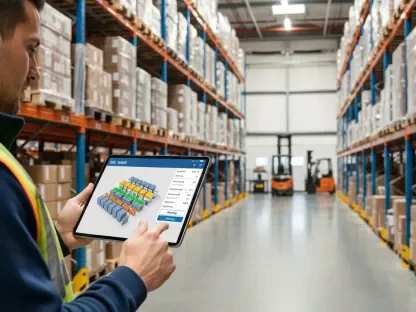With over two decades in the logistics industry, Rohit Laila has an extensive background in supply chain and delivery. His passion for integrating technology and innovation into the sector makes him a significant voice in understanding the current complexities and dynamics impacting international trade. We sat down with Rohit to discuss the recent decision by DHL to suspend certain U.S.-bound shipments, the implications of new U.S. trade regulations, and how the logistics industry can navigate these changes.
Can you explain the primary reason for DHL’s suspension of U.S.-bound business-to-consumer shipments over $800?
The primary reason DHL suspended these shipments is to address the delays caused by new U.S. trade regulations. As of April 5, shipments over $800 now require formal customs processing. This change has increased the volume of formal customs clearances DHL must handle, leading to significant transit delays.
How long do you anticipate this suspension of shipments to the U.S. will last?
It’s difficult to pinpoint the exact duration of this suspension. It will likely continue until DHL can scale up their operations to manage the increased workload and mitigate the delays caused by the new customs processing requirements.
Which types of shipments are exempt from the suspension announced by DHL?
The suspension does not impact business-to-business shipments headed to U.S. companies, nor does it affect shipments with a declarable value below $800.
What specific changes in U.S. trade regulations led to the decision to suspend certain shipments?
The main regulatory change was the reduction of the customs value threshold from $2,500 to $800, which now necessitates formal customs processing for any shipments exceeding this value. This has significantly increased the volume and complexity of clearances.
How have the new customs regulations impacted the processing time for shipments over $800?
The new regulations have extended processing times considerably. With the lower threshold, DHL faces a surge in formal customs clearances, translating to multi-day transit delays for shipments over $800.
What was the previous customs value threshold for formal customs processing before it was changed to $800?
Previously, the threshold was set at $2,500. Shipments below this value could bypass formal customs entry, making the process faster and more streamlined.
How is DHL managing the increased number of formal customs clearances due to the new regulations?
DHL is working tirelessly to scale up its operations to manage the increased demand. This includes operating around the clock to handle the higher volume of formal customs clearances.
What steps is DHL taking to scale up operations and address the multi-day transit delays?
DHL is likely increasing staff, enhancing their processing infrastructure, and possibly implementing new technological solutions to tackle the increased workload more efficiently and reduce delays.
How did the changes in U.S. trade regulations come into effect, and who oversees these regulations?
These changes were enacted by U.S. Customs and Border Protection (CBP) and became effective on April 5. The CBP oversees and enforces these regulations as part of their mandate to manage and facilitate secure trade and travel.
Can you explain the Type 11 informal entry process and how it differs from formal entry procedures?
Type 11 informal entry is a streamlined customs process used for goods valued below $2,500 before the threshold change. It requires less documentation and is quicker than formal entry procedures, which involve more comprehensive data submission and inspection.
How will the impending end of the duty-free de minimis exemption for China-based products affect shipments below $800?
The end of the duty-free de minimis exemption for China-based products means these shipments will no longer avoid duties and formal entry requirements, potentially increasing costs and processing times for goods valued under $800.
What alternative options do experts suggest for shippers adjusting to the upcoming restrictions on the duty-free de minimis exemption?
Experts recommend leveraging the Type 11 informal entry process for shipments that fit within the new criteria or exploring alternative shipping and logistics strategies that could help bypass some of the new restrictions.
How are other logistics companies, such as FedEx and UPS, responding to the ongoing trade turmoil between the U.S. and China?
FedEx and UPS have instituted new fees for shipments from China to the U.S. to manage the increased costs and regulatory complexities resulting from the trade inequities.
What specific adjustments have FedEx and UPS made in their shipping services between China and the U.S.?
Besides the new fees, FedEx and UPS are likely reevaluating their shipment volumes, routes, and operational capacities to better handle the regulatory changes and ensure timely deliveries.
Why will Hong Kong’s postal service suspend all shipments of U.S.-bound items starting April 27?
The suspension by Hong Kong’s postal service is probably a response to similar regulatory challenges and delays that are impacting other logistics providers, making it difficult to ensure timely and cost-effective delivery of shipments to the U.S.
Do you have any advice for our readers?
For those navigating these challenging times in logistics and trade, it’s crucial to stay informed about regulatory changes, collaborate closely with your logistics partners, and implement flexible strategies that can quickly adapt to new policies.









